
If you have always looked for an outlet to share your culinary passions, tips and ideas with the world, blogging is for you.
Whether you want to write about your own killer recipes or critique those of others, a food blog is what you need. But how exactly do you start one? In this guide, we’ll discuss how to start a food blog and talk about growth strategies for its success. Being a profitable niche, food blogging offers excellent opportunities of monetization through display ads, affiliate marketing, selling products etc. So, you truly have ample reasons to get the ball rolling on this project.
What is a Food Blog?
A food blog is a website where content about recipes and cooking tips are published on a regular basis along with captivating food pictures. It can feature a diverse range of topics including food recipes, ethnic cooking, healthy food tips, cuisine from different continents and countries, how-to cooking guides and restaurant reviews to help guests find the best places to eat and drink.
Some food blogs focus on specific types of cuisines and recipes. Food blogging is a type of food journalism, as it informs people about the latest news and events related to food and traces the history of food.
Why Should You Start a Food Blog?
Being obsessed with food is a common motivation behind starting a food blog. But it is good to have clarity of purpose. When you know the exact reasons why you want to blog, it will increase your focus, encourage you to work persistently and ultimately lead you to success. Food enthusiasts create food blogs for a variety of reasons, some of which are given below.
Express Your Love for Food: Let the world know about your fondness and knowledge of food. Write about world cuisines, cooking fundamentals, dining out, holiday recipes and history of food and ingredients.
Display Your Expertise: Everyone looks up to and learns from the best. Prove yourself as an expert by sharing your unique perspectives and experiences. Answer the audience’s questions and offer practical tips.
Polish Your Writing Skills: You learn to write by blogging. When you consistently write about various topics, you will develop your voice and learn to write better, which can lead to successful collaborations.
Educate Readers: Create step-by-step guides and teach cooking skills. Use photos and videos to demonstrate how to make different recipes. Write in a way that is easy to read and understand for the audience.
Build Relationships: Get your name out there, expand your audience and connect with like-minded people from the world over. Collaborate with other bloggers who write about a range of foods, cuisines and recipes.
Make Money: As a food blogger, you can earn from a few thousand dollars to millions of dollars per month using various methods. [We’ll discuss the ways to make money as a food blogger later in this post.]
Which of these reasons apply to you? Whether you plan to start a food blog or already have one, see to it that you have the right motivations to remain productive and create high quality and efficient work.
How to Start a Food Blog: Step-by-Step Process
Setting up a food blog is not hard. To create a beautiful food blog, all you need to do is follow some simple, basic steps.
Choose a Niche
Food is a broad topic. Though you can blog about food in general, a better idea would be to niche down. Focusing on a specific food topic will help you stand out and connect with readers quickly.
Whether you want to write on general or specific food topics, the choice is yours and it is completely doable. All that matters is how well you do. If you blog about really good and useful recipes, visitors will come back to read more. However, narrowing down topics can make the job of building your blog a lot easier because you will be competing with fewer blogs in a niche. For example, you can start a blog focusing on a variety of vegetarian food and cuisines. You can cover meat-free recipes, meal plans and cooking tips to attract a like-minded audience.
When you pick a specific food topic, just make sure it is well-searched and profitable enough to blog about. Most of all, you should go with a niche that you have experience with and are truly passionate about.
Select a Domain Name
Finding a domain name that stands for your chosen niche is the next step. This name is the online address of your food blog.

There are several websites that provide domain registration service. If you already have a name in your mind, you should first check whether it’s available or already taken. It is possible that the exact domain you want has been purchased by someone else. Don’t panic anyway. Think of something unique that means the same or is close to the name that you had considered at first.
Use these tips to pick a blog name:
Use the Right TLD: A top-level domain (TLD) is the part that is there in the domain name after the dot. Understand the meaning of TLDs such as .com, .net, .org etc. For example, it is best to register domains with the .com extension, as it is the most popular and versatile of all the top-level domains.
Keep it Short: Number of characters matters. Don’t go for lengthy domain names, as visitors will find it difficult to memorize and type. The best practice is to keep the length of your blog’s name between 3 and 12 characters.
Avoid Hyphens: Don’t make domain names by hyphenating words, as it doesn’t look good and becomes unnecessarily long. Plus, hyphenated blog names are also hard to memorize and type. Above all, a domain name containing hyphens looks spammy and creates a trust issue.
Include Keywords: Though keywords don’t have a direct effect on SEO, using them can enhance search optimization. They also tell visitors what kind of topics your blog covers. However, you need to be careful with the inclusion of keywords, as overdoing it will make your brand look spammy.
Instead of picking abstract words for your food blog’s name, go for descriptive phrases. Try to combine words such as “recipe”, “vegan”, “kitchen”, “eats”, “gourmet”, “foodie”, “taste”, “meal” and “oven” with your own name or other words to come up with unique and attractive food blog names.
Secure your finalized domain without any delay. As soon as your domain is booked, you are ready to move on to the next step.
Buy Web Hosting
You have registered the address (domain name) of your food blog on the internet. But you haven’t yet bought the space where your blog will “live” online. This is exactly what a web hosting service does. It gives you online space where you can keep all the data associated with your blog for readers to access. Therefore, you need to find a reliable service to host your blog on the web.
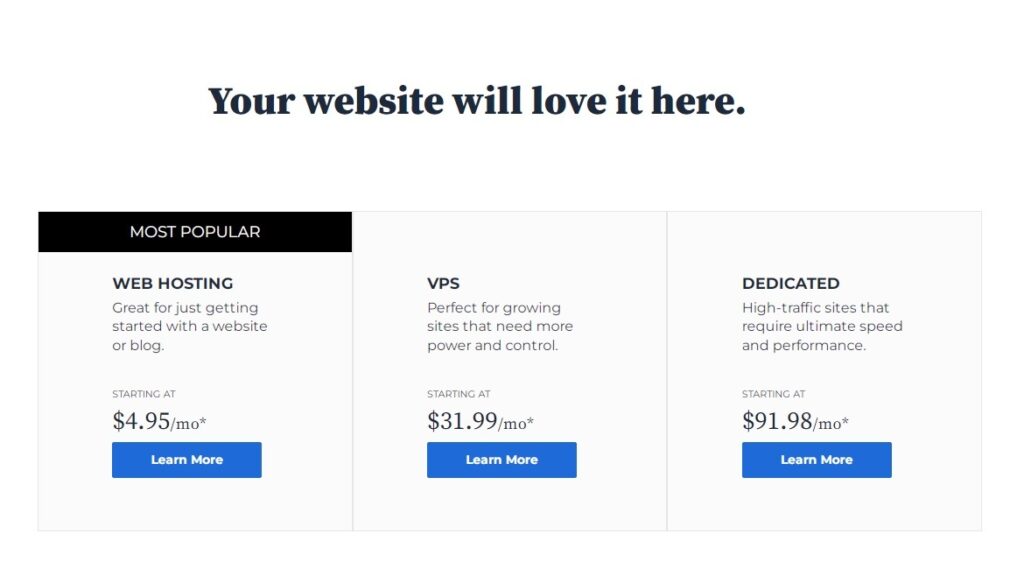
Usually, you’ll be able to purchase the web hosting plan from the same company you register your domain name from. Or, you can buy web hosting separately, as per need or preference. For example, companies such as Bluehost and GoDaddy provide both the services in one place.
Some companies provide free one-year domain registration with web hosting plans. It is always advisable to use a service provider that is dependable and reputable rather than falling for the cheapest service.
Install WordPress
To start and manage your food blog, you will need to use a blogging platform. It is best to go with WordPress, as it is a top-notch, acknowledged blogging software. You can install it in less than five minutes.
Key reasons to use WordPress include:
Free: Since it is an open-source blogging platform, you don’t have to pay a dime to install and use it. It is free for everyone.
Easy to Use: The blogging software has an intuitive interface. This means you create new pages, posts and add images without touching a single line of code. All features and tools are easy to understand.
SEO-friendly: WordPress-built sites are easy for search engines to crawl and index. This gives your blog an extra edge.
Secure: Using this software will keep your blog secure. WordPress releases frequent updates to bolster malware protection. Just remember to install all the security updates as soon as they are available.
Responsive: WordPress is designed to be mobile-friendly. No matter which browser, it renders well across screen devices.
All these useful and robust features make WordPress an incredibly popular blogging software in the world. You’ll really like using the user-friendly WP dashboard for running your food blog on a day-to-day basis.
Install a WordPress Theme
The next step is to dress up your food blog. That is exactly what a theme does; it gives your blog a nice look and feel. Plus, a theme determines the features and functionality of a blog. WordPress has several themes in its library for bloggers to choose from and use. The point is to apply a theme that is a good match for the specific style and design requirements of your food blog.
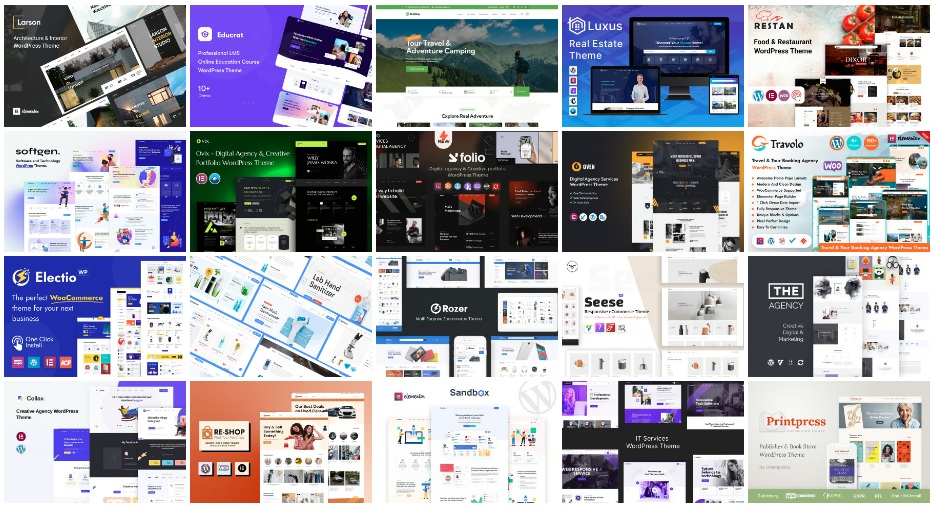
You can either use a free WordPress theme or buy a premium theme from WordPress itself or from other developers.
Look for these key features in a premium theme:
Multiple layout options
Top bar with call to action (CTA)
Featured section
Countless color options
Hundreds of Google fonts
Newsletter section
Responsive design
SEO-friendly features
Multilanguage compatibility
Translation-ready
A well-designed, professional theme will make it easy for you to organize your content and monetize your food and recipe blog.
Install WordPress Plugins
Plugins allow you to add those features and functionalities that are not a part of the core WordPress installation. Though not necessary, you can use these pieces of software to facilitate the operation of your food blog. Using plugins ensures you don’t have to write custom codes to add new features.
Plugins can be used to add functionality such as:
Social media sharing
Search engine optimization
Contact form
Site speed optimization
Spam protection
However, you should exercise some caution and choose the plugins you need wisely. It is a good idea to first make a list of the new features that you really need and then look for and select the right plugins.
Before you install and use a WordPress plugin, find out what other users have to say about using it. Make sure it is from a trusted developer and compatible with the theme of your food and recipe blog. Most of all, keep all installed plugins up-to-date to safeguard your site from potential hacking.
Start Blogging
Kudos to you! Your food blog is now all set and you can start writing about and sharing your culinary delights with the world.
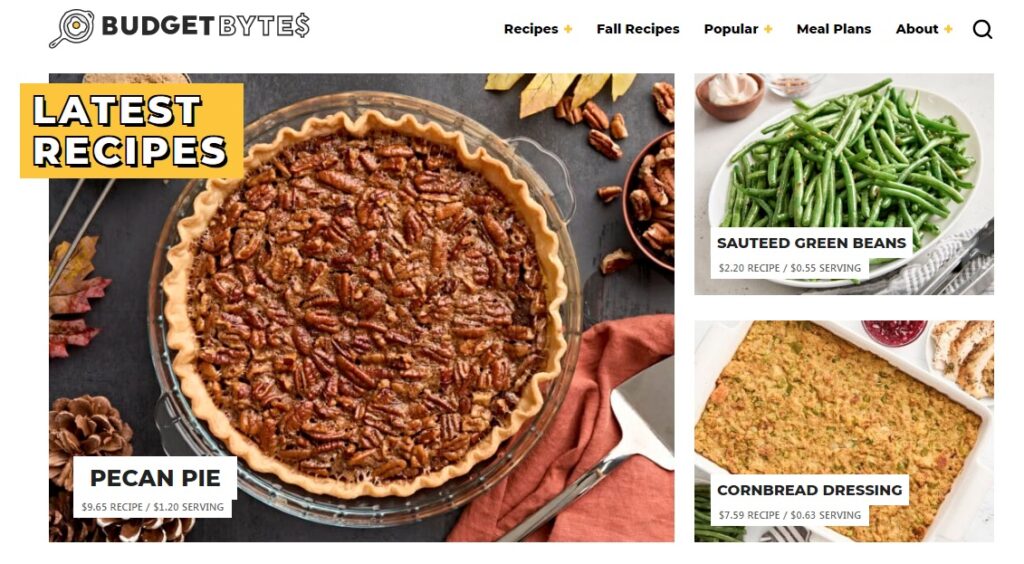
Try to use a content calendar, as it will help you plan and deliver content in a timely manner. Setting and sticking to a publishing schedule is a good strategy to keep readers coming back and establish your food blog as a consistent resource. Google’s ranking algorithm is designed in a way that favors those sites that publish content on a regular basis. Of course, quality is paramount.
Here are some food-related writing ideas for you:
Killer Recipes: Your recipes will likely constitute a large part of your blog content. What gives a food blogger more joy than seeing their followers recreate and enjoy their recipes? Make sure you write better recipes that inform and engage readers. Be as clear and forthright as possible.
Latest Culinary Trends: People have a keen interest in trending topics. As a food blogger, you should keep tabs on the recent developments in the food industry and write about them to keep readers engaged. Read food magazines and visit popular blogs and websites to remain informed.
Cooking Tutorials: Teach readers new and exciting cooking techniques and skills. Give clear and easy to understand instructions. Based on your culinary knowledge, you can create technique-focused tutorials both for beginners as well as those so-so cooks that want to raise their game.
Ingredient Guide: Right from commonplace produce to unexplored condiments, talk about the procurement, uses and benefits of specific ingredients. Help people learn how they can incorporate these ingredients into their cooking. This is an excellent way of providing genuine value to readers.
Local Cuisine: Traditional food helps people explore a region’s culture and history. It is a good idea to write about the unique dishes of a specific area as well as the best restaurants that serve them.
Stories: Humans have always been fond of stories. Sharing your food-related stories or even some beyond-the-food stories will help you build a deep connection with readers. For example, you can tell a story that explains how a certain dish or cuisine came into existence. Likewise, you can talk about a person from whom you got a recipe or learned an innovative cooking technique.
To keep readers engaged, you should create a variety of posts revolving around the theme of your food and recipe blog. Whether you showcase recipes, post reviews, write about top trends or share stories, always ensure the content quality is high. Make your posts easy to read and understand.
Tips to Monetize Your Food Blog
Going forward, you’ll want to make money from your food blog like all professional food bloggers do. According to reports, food bloggers earn between the range of $4,000 and $90,000 per month. The more traffic your blog gets, the more money you can generate using multiple ways and methods.
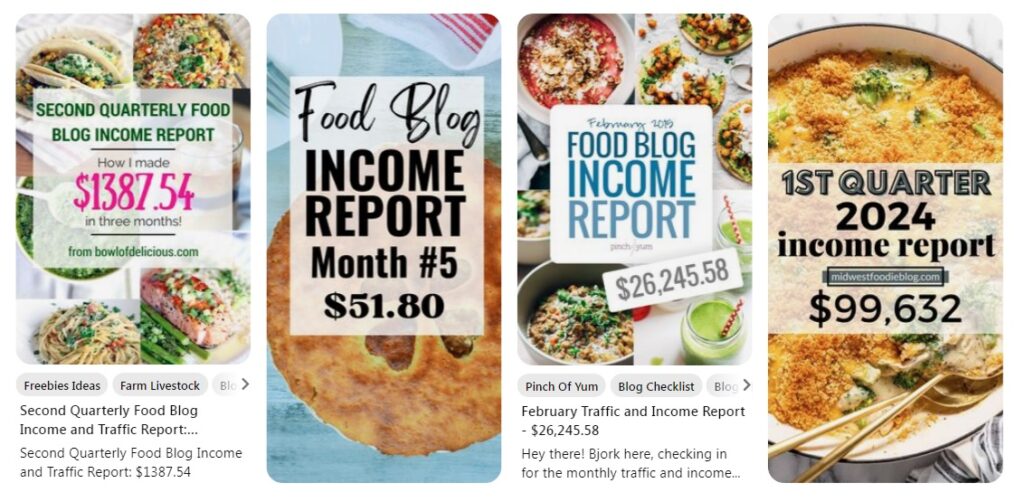
Some of the most commonly used monetization methods include:
Affiliate Products: Promote affiliate products to earn an income. To do that, you can either sign up for networks such as Amazon Associates and Commission Junction or directly work with various food brands.
Display Ads: Sign up with Google Adsense and run display ads on your food blog. This is as simple as first getting approved and then placing the given ad code on your blog for visitors to view and click on. Plus, you can sell advertising space directly to food businesses and restaurants.
Sponsored Posts: Get paid to sponsor pieces of content by food brands on your blog. Do it in a way that aligns with the needs of your target audience. Going off-track can hurt your brand identity.
Offer Courses: Put together courses covering topics such as recipe writing skills, food photography, cooking methods, social media strategies etc. Earn a passive income by selling these courses on your blog.
Sell E-books: Create food and recipe e-books and sell them on your site. Pick titles such as “Easy Banana Recipes”, “Cooking Healthy Meals for Your Family”, “Homemade Candy Recipes” etc. If you are time-strapped, hire a content writer to produce an e-book that your audience will love reading.
You are ready to monetize your blog as soon as you have built an adequate amount of traffic per month. However, you should not wait to start learning about and exploring various ways of making money. Also, try to develop content resources well in advance so that you stay prepared to monetize.
10 Food Blogging Tips for Success
Don’t look for shortcuts to success. To be a successful food blogger, you need to work hard and persevere. Here are some best practices, tips and guidelines that you should follow to build and grow your blog.
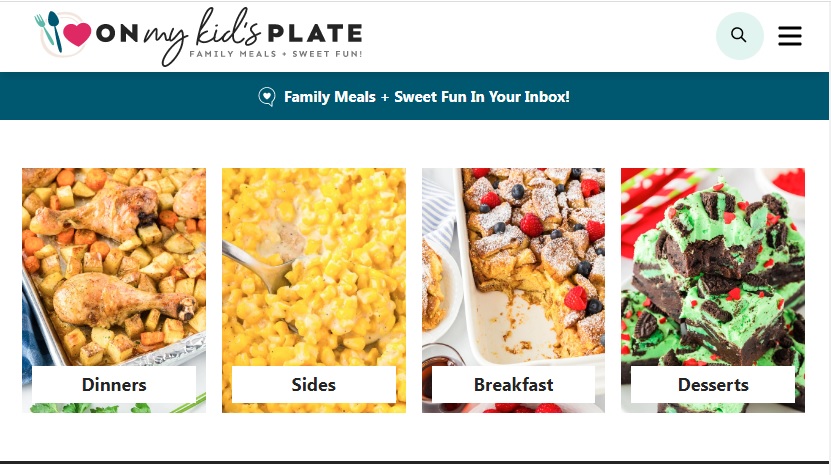
#1. It is crucial to maintain posting regularity. Create a schedule and stick to it to publish content consistently. Make readers aware of how often you will post and when to expect a new post on your food blog.
#2. To start with, keep the length of your blog posts between 500-800 words. Expand your content horizons gradually.
#3. Produce original and high-value content. If visitors like your blog content, they will keep returning for more. Seek the help of a freelance writer or hire a ghostwriter to step up your food blog content creation.
#4. Adopt a tone and style of writing that sets you apart from the competition. Let your personality shine in your blog posts.
#5. Showcase your own killer recipes. If you write about common recipes, recreate it in a way that makes it your own.
#6. Since it is a food blog, you will need to include lots of high-quality pictures, videos and links that are topic-relevant. Learn how to take great food pictures from various angles using the best light source.
#7. Take the time to understand how SEO works. Select potential keyword phrases and incorporate them into your blog content. Proper search engine optimization will help you attract free, organic traffic.
#8. Respond to comments on your blog without any delay. Let your readers know that you value their opinions and encourage them for further interaction. Build relationships with frequent commenters.
#9. Make it easy for visitors to follow your food blog. Add social media sharing buttons for visitors to share your content.
#10. Be nice and humble.
Even if you don’t get much traction at the beginning, keep writing and publishing blog posts as per your planned schedule. You need to wait a little before starting to reap the rewards of your hard work.
Need Help Setting Up Your Food Blog?
Anyone with culinary interests and expertise can start a food blog. You don’t need to have any special skills, as you can learn and yourself improve over time. Hopefully, this food blogging guide will help you get started on the right foot and successfully build and grow your food and recipe blog. If you have questions or need expert help with the set up, design and content of your food blog, feel free to reach out to me via a whatsapp message, phone call or email.

Leave a Reply